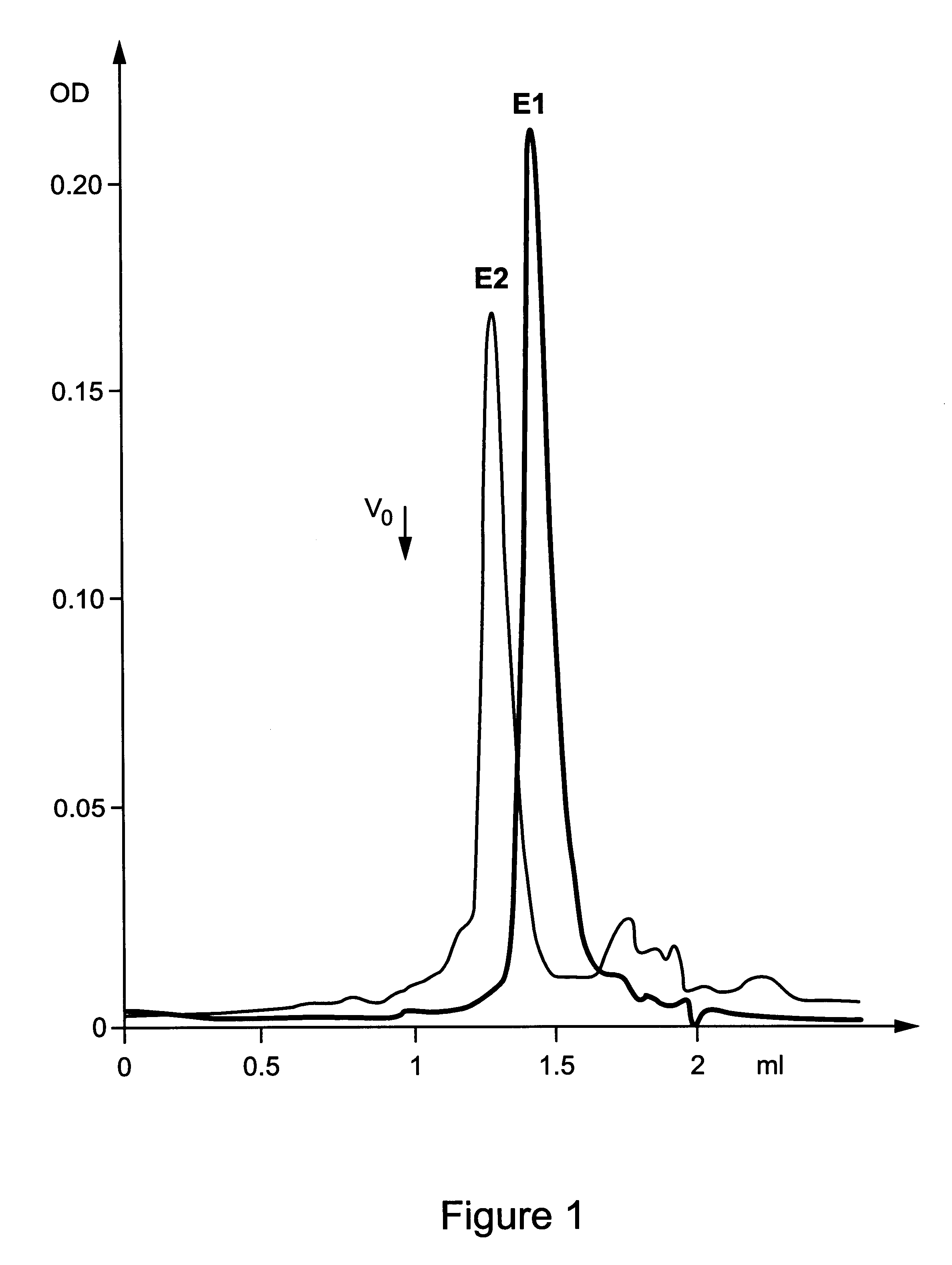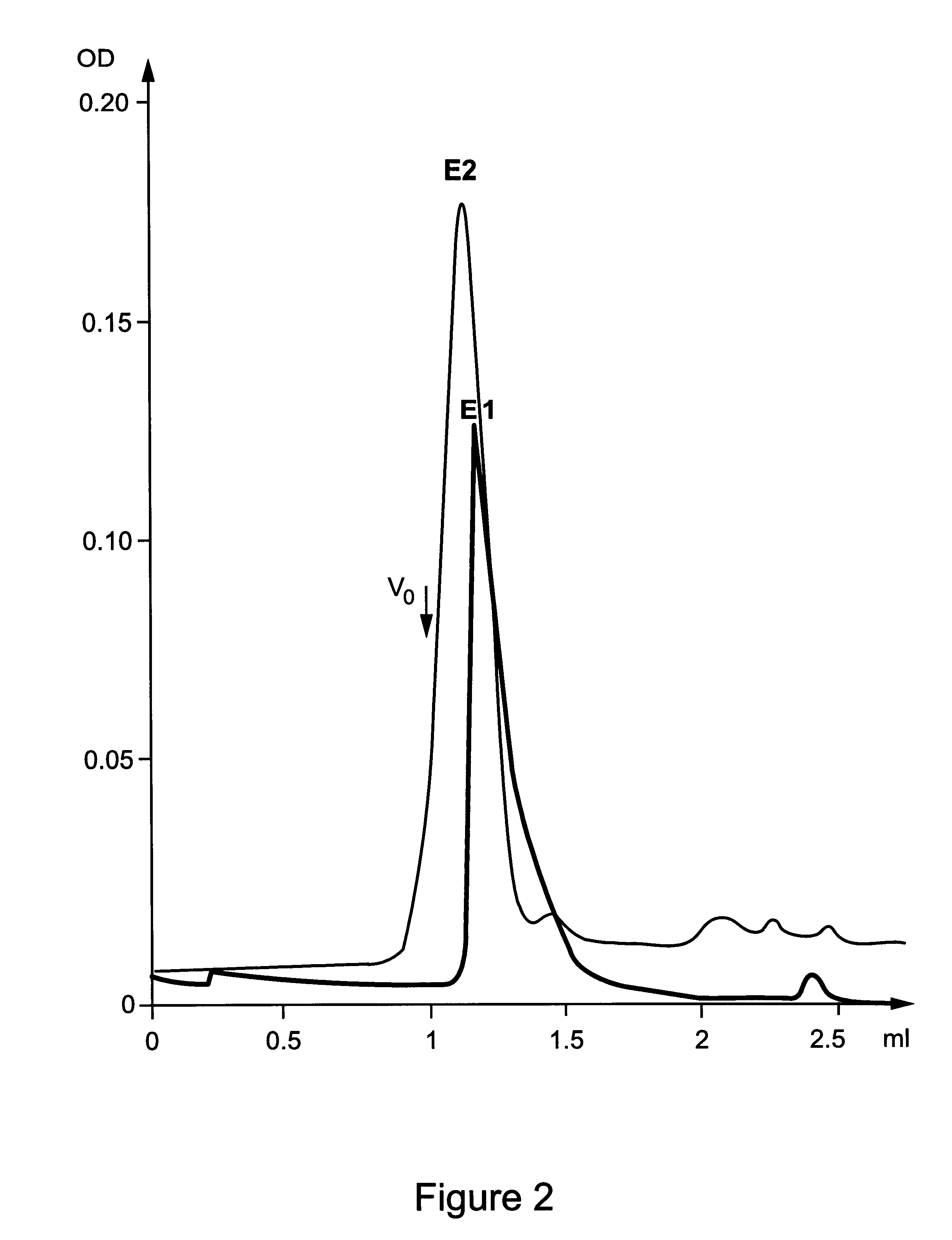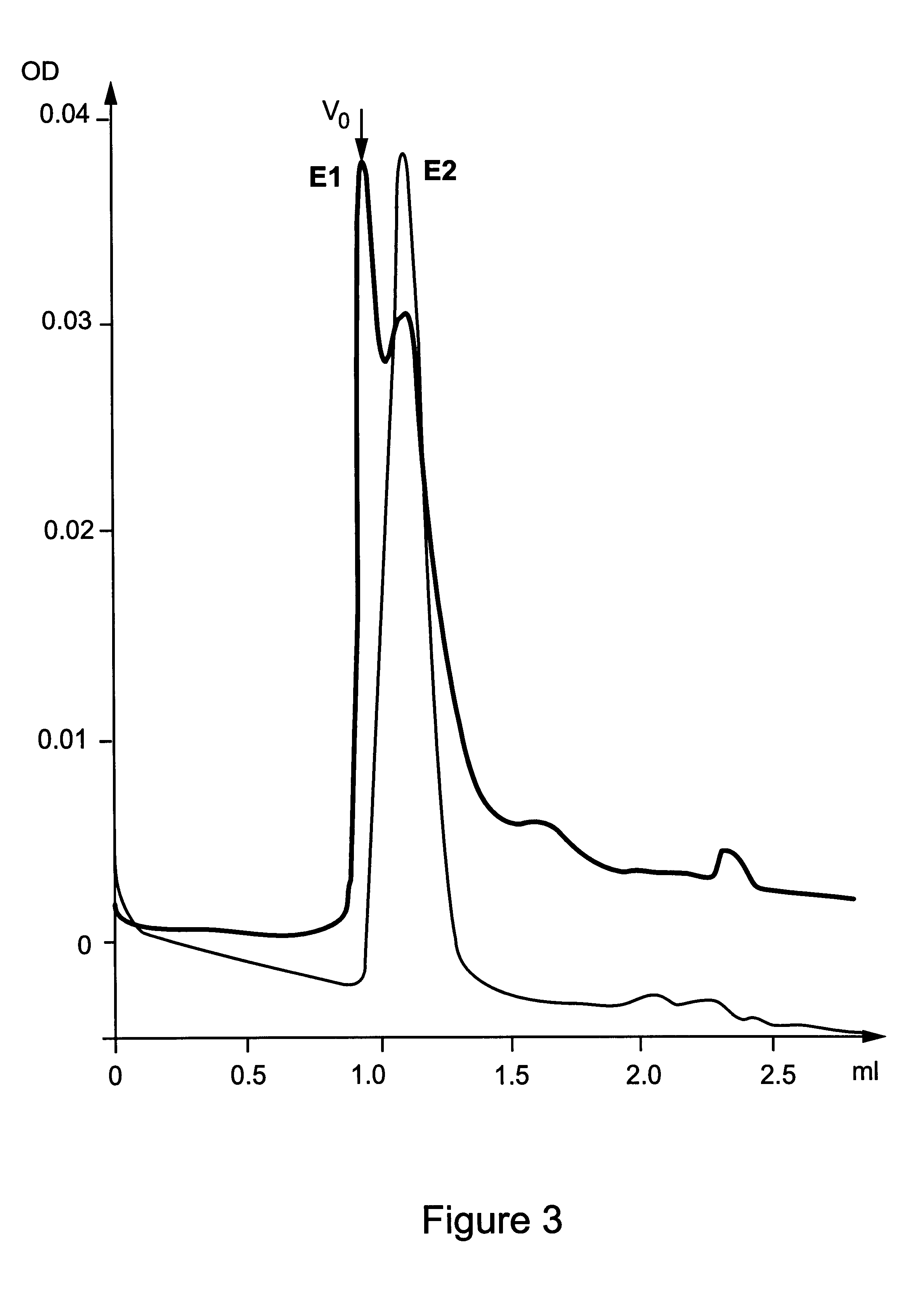Particles of HCV envelope proteins: use for vaccination
- Summary
- Abstract
- Description
- Claims
- Application Information
AI Technical Summary
Benefits of technology
Problems solved by technology
Method used
Image
Examples
example 1
Expression, Purification, and Detergent-assisted Homo-oligomerization of the HCV E1 Protein
The HCV E1s protein (amino acids 192-326) was expressed and purified from RK13 cells using recombinant vaccinia virus pvHCV-11A according to the protocol described in Maertens et al. (PCT / EP 95 / 03031). In addition, the purified E1 protein in 3% Empigen-BB which displays an apparent molecular weight corresponding to an E1 homo-dimer (approximately about 60 kDa; FIG. 1), was pooled and the pooled fractions were again applied to a size exclusion chromatography column (according to PCT / EP 95 / 03031) and run in the presence of 0.2% CHAPS or 3% betaine. Surprisingly, although the E1s protein is devoid of its membrane anchor region, a homogeneous population of specifically associated E1 homo-oligomers with an apparent molecular weight of 260-280 kDa could be obtained with both detergents (FIG. 2). Such a homo-oligomeric structure could contain an approximate number of 9 E1s monomers. It should be clea...
example 2
Analysis of the Higher Order Oligomeric Structures of E1s by Means of Dynamic Light Scattering
In order to confirm the unexpected result that particles have been created, E1s preparations in 0.05% CHAPS and 0.1% betaine, prepared according to example 1, or in 0.1% betaine, prepared by dilution of preparations in 0.5% betaine, were subjected to analysis by means of dynamic light scattering (DLS).
The dynamic light scattering technique measures Brownian motion and relates this to the size of particles. The larger the particle, the slower the Brownian motion will be. The velocity of the Brownian motion is defined by a property known as the diffusion coefficient (usually given by the symbol D). The size of the particle is calculated from the diffusion coefficient by using the Stokes-Einstein equation: d(H)=kT / 3.pi..eta.D, in which d(H) is the hydrodynamic diameter, k is the Boltzmann constant, T is the absolute temperature, .eta. is the viscosity. Notebly, the measured diameter is a value...
example 3
Size and Shape Analysis by Means of Electron Microscopy
Ten .mu.l of E1s (226 .mu.g / ml in PBS / 0.05% CHAPS; and 143 .mu.g / ml in PBS 3% betaine) was visualized with a standard negative staining with 1% uranyl acetate on carbon stabilized formvar grids. The sample was applied for 30 seconds and then rinsed with dH.sub.2 O before staining for 5 seconds and photography (FIG. 6).
Statistical analysis yielded the following results: the E1s particle in CHAPS had a mean diameter of 8.7.+-.0.27 nm (range 4.3-29.0; 95% CI 5.4) and that the E1s particle in betaine was less homogeneous with a mean diameter of 9.7.+-.0.55 nm (range 4.3-40.5; 95% CI 11.0). Surprisingly, the 3% betaine preparation, which initially showed a MW of 250-300 kDa as analysed by SEC even shows larger particles than the 0.05% CHAPS preparation, which initially showed a MW of >600 kDa. We therefore hypothesized that intermediate homo-oligomeric forms of E1s obtained by 3% betaine may have formed higher order particles over ti...
PUM
| Property | Measurement | Unit |
|---|---|---|
| Fraction | aaaaa | aaaaa |
| Fraction | aaaaa | aaaaa |
| Fraction | aaaaa | aaaaa |
Abstract
Description
Claims
Application Information
 Login to View More
Login to View More - R&D
- Intellectual Property
- Life Sciences
- Materials
- Tech Scout
- Unparalleled Data Quality
- Higher Quality Content
- 60% Fewer Hallucinations
Browse by: Latest US Patents, China's latest patents, Technical Efficacy Thesaurus, Application Domain, Technology Topic, Popular Technical Reports.
© 2025 PatSnap. All rights reserved.Legal|Privacy policy|Modern Slavery Act Transparency Statement|Sitemap|About US| Contact US: help@patsnap.com



